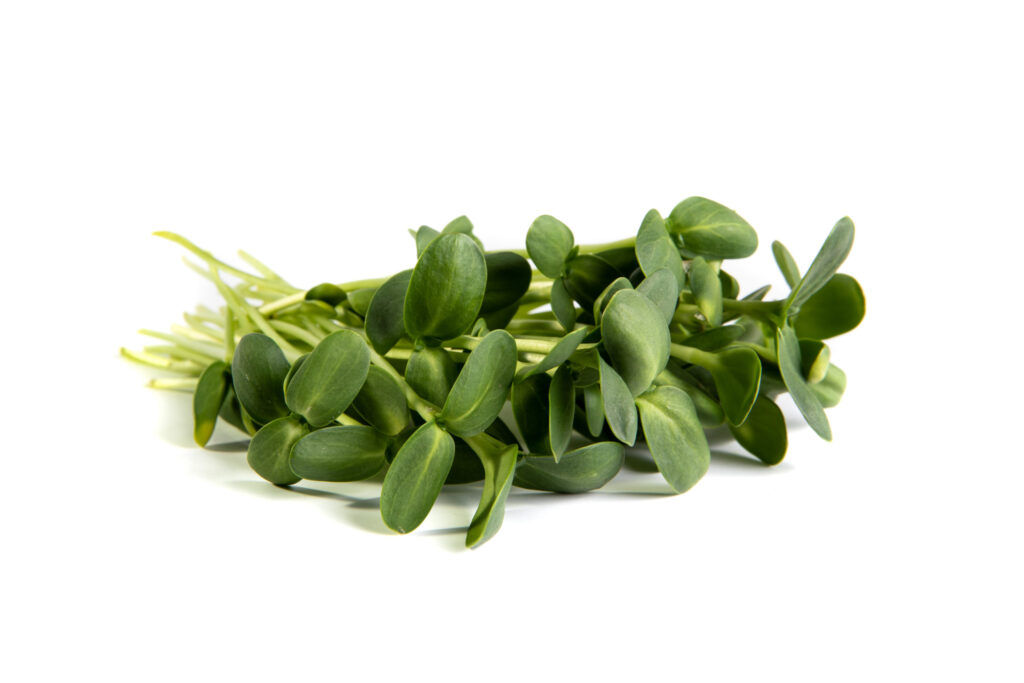Microgreen Information
According to USDA’s sunflower microgreens nutrition data, a 64 g serving of sunflower microgreens will provide:
- 25 calories
- 2 g of protein
- 4 g of carbohydrate
- 2 g of fiber
- 80 milligrams (mg) of calcium
- 14.4 mg of iron
- 60 mg of magnesium
- 80 mg of phosphorus
- 270 mg of potassium
- 10 mg of sodium
- 0.6 mg of zinc
- 9 mg of vitamin C
- 40 micrograms (mcg) of vitamin K
- 60 mcg of folate
- 500 IU of vitamin A
The greens also contain selenium, manganese, and a range of B vitamins.
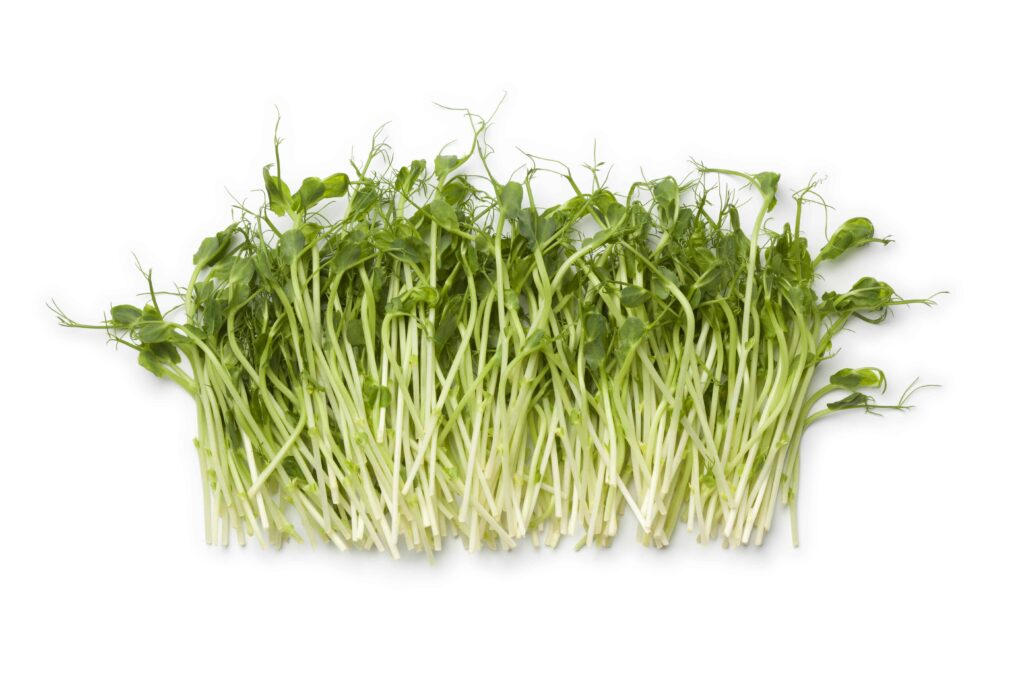
Pea $5.00 for 40gram container
Freshly harvested pea sprouts are rich in vitamins and minerals. A single serving of 1 Cup (approximately 100g) of pea microgreens is low in calories and relatively high in protein. Take a look at the complete nutritional profile below, including the recommended daily allowance (RDA) where applicable [2].
Total Fat (Incl. trans fat and saturated fat) 0g
Cholesterol 0g
Sodium 0g
Carbohydrates 8g
Dietary Fiber 3g / 16% RDA
Sugars 0g
Protein 2g
Vitamin A 2% RDA
Vitamin C 50% RDA
Calcium 4% RDA
Iron 10% RDA
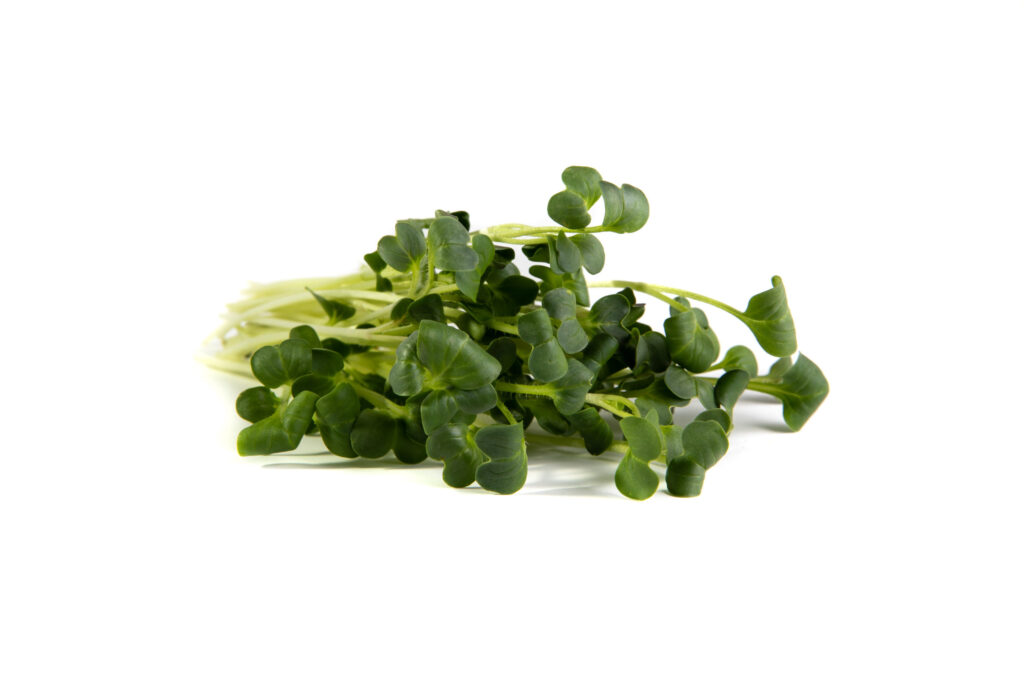
Daikon Radish $5.00 for 60gram container
Radish microgreens are a great way to add nutrients and flavor to your diet. Radishes are an excellent source of vitamins A, C, E, and K, along with calcium, iron, and dietary fiber. They also contain high levels of antioxidants that can help reduce inflammation in the body.
Daikon Radish is typically a bit spicier than the more common red radish root and in their microgreen form they taste super peppery, zesty, and spicy (very similar to the full grown vegetable).
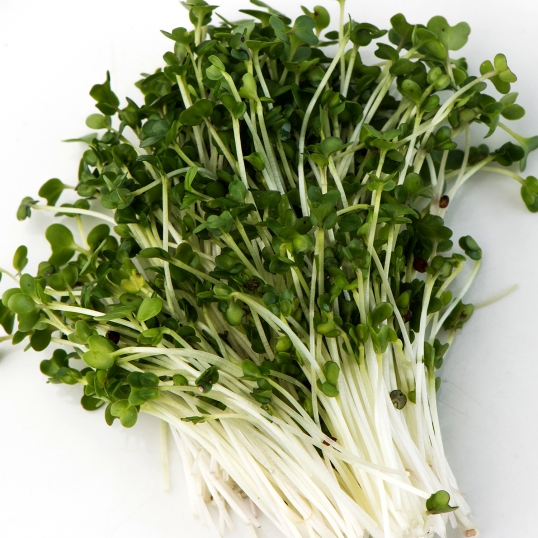
Broccoli $5.00 for 60gram container
Carotenoids. Provitamin A is an essential fat-soluble antioxidant and can protect cellular membranes by scavenging free radicals.
Ascorbic Acid. Vitamin C is an essential nutrient for the human body, acting as an antioxidant. It is necessary for growth, development, repairs different body tissues, involved in the formation of collagen, absorption of iron, wound healing, and ensures the immune system’s proper functioning.
Tocopherols. Tocopherols and tocotrienols are together summarized as “vitamin E,” known as fat-soluble antioxidants. Alpha-tocopherol is the only one used by the human body and is vitally important to your vision, reproduction, and the health of your blood, brain, and skin.
Phylloquinone. Vitamin K1 is a fat-soluble vitamin and makes proteins necessary for blood clotting and healthy bones. According to the Harvard School of Public Health, vitamin K helps produce four out of 13 blood clotting proteins. The “K” comes from the German word “koagulation.”
Lutein/Zeaxanthin. Lutein and zeaxanthin are xanthophyll carotenoids, accumulating in the macula of human eyes. Numerous epidemiological studies have shown that lutein and zeaxanthin play a critical role in preventing age-related macular degeneration and cataract.
As you build your strategy for better health, consider the nutrition of broccoli microgreens to meet your Recommended Dietary Allowance (RDA)[3] for essential elements.
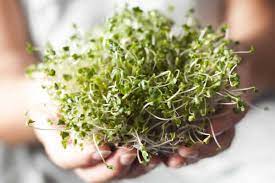
Broccoli as microgreens is an incredible source of protein and they are just super tasty. You can use this microgreen in most dishes or simply as a beautiful garnish.
It’s very simple and quick to grow. They are also excellent to add in your children’s dishes if they are not fond of the regular and full-sized ones. These tiny versions are not only tasty but they are packed with nutrition. They hold 40 times more nutrition than the adult counterpart!
Broccoli Brassica $5.00 for 60gram container
Microgreens and Sprouts explained
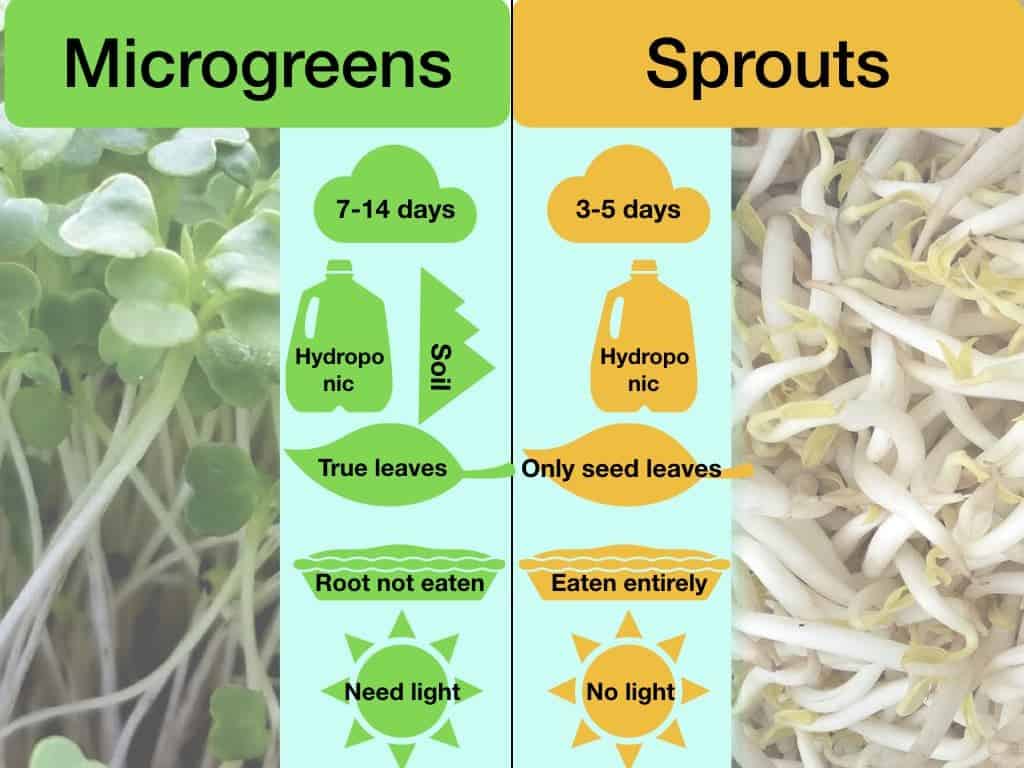
The word “micro” here says it all. Microgreens are young seedlings of edible vegetables and herbs. Unlike larger herbs and vegetables that take weeks or months to grow, microgreens can be harvested and eaten a week to 10 days after the cotyledon — a part of the embryo within the seed — leaves have developed.
These tiny versions only grow to a few inches and can come in 50 to 60 different varieties. Microgreens were originally limited to fancy dinner plates and boutique grocery stores due to their higher cost.
After each harvest, growers need fresh soil, seed and a sterilized container or growing mat to repeat the growing process. These costs add up compared to mature herbs and vegetables that grow back after they’re initially cut or trimmed.
The use of microgreens has expanded now that they can be grown at home. You can add them to a salad, put them on a sandwich or top a steak or fish with them to provide a floral contrast.
Don’t confuse microgreens with sprouts. Sprouts are germinated in water, not soil, for one or two days to produce underdeveloped leaves. Microgreens grow in soil and sunlight and take at least a week to produce leaves.

